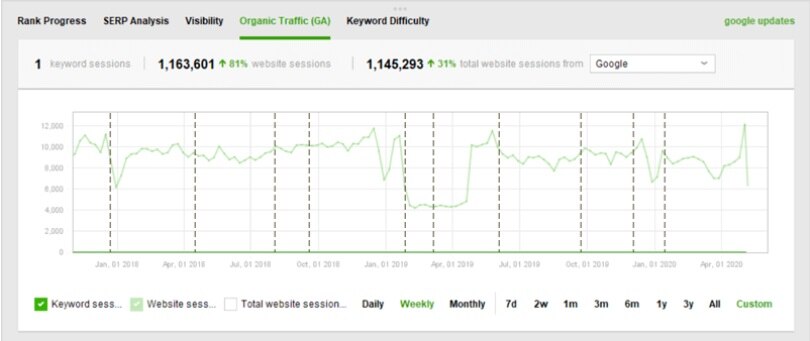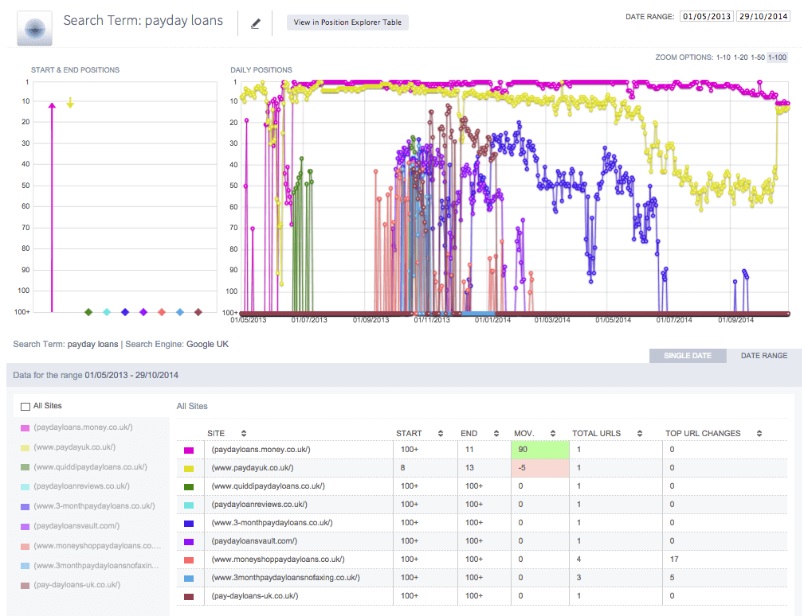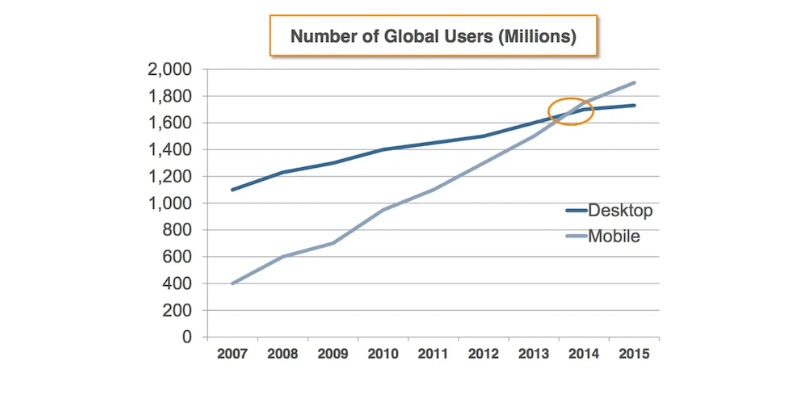The internet was a revolutionary new technology that suddenly allowed for content, products, and services to be easily available to anyone that looked for them. With the increasing amount of data uploaded to the World Wide Web came the need for a filtering process. Enter the Search Engine.
The Search Engine had one objective – filter through the available data and accurately deliver results that most match our questions. Algorithms were created to make this filtering process accurate and efficient. This algorithm was a game. An interesting set of steps that differentiated baby and bathwater, wheat, and chaff.
People started to game these algorithms in impressive and astute ways, exploiting them to gain traction and visibility. Thus was born the field of Search Engine Optimization. Search Engine Optimization helped websites rank high on Search results and beat out the competition.
But these tactics never last too long. The algorithm gets smarter by the second. And methods used to optimize Search Results are constantly changing and getting more and more refined. This means a lot of the SEO methods that once worked are now completely redundant.
Here are ten avoidable SEO practices that have become redundant, often even counterproductive to your goal of increasing traction and traffic on your websites.
1. Keyword-Related Malpractices
Keywords are search terms that capture the essence of the topics in your articles or posts. They define your content. These are ‘search queries’ Google users enter into the search bar and the index-term google’s algorithms use to match a search query to a relevant website.
Using the right keywords is a great boon- it means more visibility, more traffic, and a higher rank on Google’s Search Engine.
A good fact to bear in mind about the algorithm is that you cannot fool it more than once. It learns and remembers. Trying any of these Keyword ‘hacks’ is only to your detriment.
Targeting Irrelevant Keywords
Keyword density refers to the frequency with which keywords appear in your article.
Keyword Density = Total Words in your article/Number of times your Keywords are mentioned.
The optimal Keyword density is around 1%-2%.
Keyword Stuffing was the (mal)practice of excessively repeating keywords (high keyword density) in an attempt to manipulate the algorithm to increase a website’s ranking in Google Search results. And it worked for a while. Until it didn’t.
Don’t ever forget who you are writing for. Write for real people. While it makes sense to aim for an optimal word count and to include your keyword as relevant, a high keyword density provides a terrible user experience, and that in turn will eventually drastically affect your rankings. The algorithm will label your article as spam and your rankings will plummet.
Keyword Density
Trying to work around the problem of a bad user experience, people started to use the concept of keyword stuffing but made it invisible- hiding keywords in the metadata of the website, using text colors that blend into the background to hide the repeated use of targeted keywords that users can’t see but will be picked up by crawlers.
This doesn’t work anymore. It hasn’t worked for a long time. It is important that what the user sees matches what the Web Crawler sees.
Keyword Stuffing
If your WordPress article is about “sunscreen for zebras”, it is perfectly okay to mention “sunscreen for zebras” a bunch of times. But it is to your detriment to use vague keywords or short keywords, or attempt to use keywords that aren’t primarily related to your articles. If you are writing about “sunscreen for zebras”, don’t try to target keywords like “party hats for giraffes”.
This also applies to keywords you use as anchors. Using an internal link plugin like Link Whisper is an option to find natural, related internal link opportunities so you don’t have to stuff in keywords that seem forced. The bottom line is nothing beats good, useful content. So don’t bother being deceptive or misleading or sneaky.
2. Writing for Web Crawlers
A Web Crawler is a web spider bot that crawls the web to index websites for search engines. This piece of code will crawl through content, extract keywords and match them with search queries to help people find the information they are looking for.
In an attempt to take advantage of how the code worked and get the algorithm to rank websites higher on search results, people started writing to optimize for the web crawler and not the audience. This resulted in content that used too many repeated proper nouns, had a very high keyword density and was just unintelligible and confusing.
Reiterating a previous point- you are writing for people, not bots. If your content is confusing and not understandable, your bounce rate will skyrocket and affect your ranking. Not to mention, once again, the algorithms are smarter and more nuanced than this. If you do want to optimize content then try using a content marketing tool to ensure that you’re still creating valuable content for humans while optimizing in a healthy manner without hurting your SEO.
You can also use a good WordPress plugin, preferably one with a readability feature that reminds you to write shorter sentences, break up long chunks of text with headings, and use the passive voice less often. If you need to, try and use an online tool for content reading to hear what you’ve written out loud to see if it sounds human and natural.
3. Using Article Directories

Article Directories are websites that contain a database of links to other websites where articles have been published. You would have a summary of an article and a link to the actual article that would redirect you to a different website. You could write a quick summary of an article, submit it to multiple article directories, and link it to your website in the hopes of redirecting traffic.
These were very popular until a few years ago. But eventually, the abuse of this tactic led to an overpopulation of low-quality directories full of spam and stolen content.
Since they don’t provide much real value to visitors, the search engine ignores link directories. Google’s Panda Update update got rid of countless useless websites. The only article directories left are niche-specific and of the highest quality and credibility.
4. Creating Multiple Pages for All Keyword Variations
An amusing occurrence that became frequent a while ago was when marketers would create separate web pages altogether for every variation of a keyword. It was quite ridiculous. This resulted in the same product having multiple pages with slightly different keywords.
Honestly don’t bother. Not only will you dilute traffic but Google will also penalize you by removing your pages from search results. If you have created individual pages for different variations of a keyword, pruning unwanted pages, creating redirects, and merging content are highly recommended.
Once you cut down on the malpractices and focus on creating valuable, information-rich content that naturally attracts people you can watch your site climb the ranks if you’re actively tracking SERPs, a reward for doing things the right way.
5. Using Exact-Match Domains

Exact-Match domains use keywords as their main domain name (see the screenshot from eConsultancy above). This made it easy to rank high on the Search Results as the domain name being a keyword would imply search relevance. Google can sniff out low-quality exact-match domains.
There is nothing wrong with an exact-match domain unless it is low quality or irrelevant. Using your brand name is always preferable as an exact-match domain might cause branding ambiguity or affect user experience. And as an added benefit using your brand can improve domain authority.
6. Low-Quality Content and Article Spinning
This seems like a fairly obvious one. But in the attempt to churn out regular long-form content, you often compromise on quality and it just isn’t worth it. Finding that balance is integral. Badly done copy-paste scrapbook articles that are completely plagiarized and spiced up with a little paraphrasing don’t impress the algorithm.
Another overused tactic is article spinning. Using programs to rewrite content in multiple ways and generating high quantities of low-quality content. This content often does not make sense and isn’t easy to read. Like Joey Tribianni using a thesaurus.
The algorithm performs plagiarism checks and detects suspiciously similar and separates the wheat from the chaff.
7. Comment Spamming
A common practice is spamming the comment sections of relevant blogs with backlinks to your website. Or even worse “Click the link for a good time: https//:somethingrandomandirrelevant.com” comments that attempt to lure audiences away from one site and lead them to another. Creating spam bots is another occurrence that is becoming more and more prevalent in recent years.
These methods no longer work and are labeled ‘spam’ by the Search Engine. Nothing beats building good relationships with your audience by creating high-quality content. WordPress has plugins like Akismet to prevent spam content on your website.

Since the majority of searches now use Google Search from their mobile devices, Google primarily crawls and indexes mobile-first by default. It is strongly recommended to have a mobile version of your content.
Make sure Google can access and render your mobile site content. Use the same meta tags on both mobile and desktop, allowing Google to crawl your URLs. Make sure the mobile site has the same content as the desktop site. Use the same Headings on both Mobile and Desktop sites. However you can keep the mobile layout in mind while designing your home page. So your site also looks well designed rather than just optimized.
Make sure both Mobile and Desktop sites have the same structured Data. Check the placement of ads. Check images and other visual content quality, format, placement, and dimensions. Separate URLs if possible. Use Google AMP (via plugins like WordPress AMP or AMP for WP) to boost loading speeds and try to avoid pop-ups.
Most modern WordPress themes are responsive and mobile-friendly to begin with, but on the off chance you’re using a dated theme, it’s no problem. WordPress has plugins like WPTouch that helps make your website mobile friendly. It is lightweight and doesn’t mess with loading speeds which is an added bonus.
9. Flat URLs
There is no benefit to having a Flat URL structure as compared to a Hierarchical URL that shows directory depth. So there is no benefit in artificially flattening your URL either.
A URL has the basic structure: https://domainname.topdomain/path/path
The path component of the URL contains data. This has to do with the click distance between pages on a site. A Flat URL is only one level deep (one click away) as opposed to a Hierarchical URL which is multiple levels deep (multiple clicks away).
Flat URL Example: https://www.flatURLexample.com/path
Hierarchical URL Example: https://www.hierURLexample.com/path1/path2
Flat URLs are NOT preferred by the algorithm to Hierarchical URLs. It just happens to be how sites like WordPress are set up. Google’s algorithm does not count the number of ‘/’ slashes and categorizes a website as more or less likely to be visible on search. The URL is only an Identifier.
If technical SEO is extremely important, then you can use a WordPress Plugin like Yoast to focus on canonical URLs and other similar technical aspects.
10. Creating Multiple Websites Solely for Interlinking
A common overused practice that is now redundant and completely ineffective is creating multiple interlinked websites. That is, creating multiple or even duplicate websites with the sole purpose of linking them to each other to optimize for the algorithm. Google easily identifies this tactic now and even issues a penalty for it.
However Interlinking several legitimate, functioning websites you own is not the worst idea. Take AwesomeMotive for example. If you’ve ever visited MonsterInsights or WPForms or any of their other plugin landing pages you may have noticed that they typically add an “Our Brands” section to the footer which is helpful to the consumer (as their plugins work well together) and their SEO.
Something worth noting – Search Engines optimize for the number of linked root domains, not just the number of links. Using too many internal links dilutes their value. Adding too many internal links isn’t in any way benefitting SEO.
If you’ve read this far then you’re now crystal clear on what SEO practices you should avoid at all costs. Remember that keeping up to date on the newest changes is always important because just because it works today, doesn’t mean it will work tomorrow. Finally aim to create valuable content that people will enjoy.
